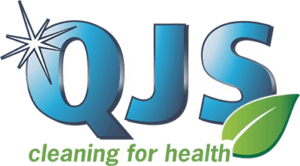 As a business owner, you strive to make your workplace a pleasant and productive place. While a few sneezes are expected every year, preventable illnesses can cost your company lost wages, money, and stress. A clean workplace is a healthy workplace and you might be able to reduce your number of sick days through the quality of the environment that you and your employees work in. According to the Occupational Safety and Health Administration (OSHA), the quality of indoor air inside offices, schools, and other workplaces is important not only for workers’ comfort but also for their health. Poor indoor air quality (IAQ) has been tied to symptoms like headaches, fatigue, trouble concentrating, and irritation of the eyes, nose, throat and lungs. Also, some specific diseases have been linked to specific air contaminants or indoor environments, like asthma with damp indoor environments. In addition, some exposures, such as asbestos and radon, do not cause immediate symptoms but can lead to cancer after many years.
As a business owner, you strive to make your workplace a pleasant and productive place. While a few sneezes are expected every year, preventable illnesses can cost your company lost wages, money, and stress. A clean workplace is a healthy workplace and you might be able to reduce your number of sick days through the quality of the environment that you and your employees work in. According to the Occupational Safety and Health Administration (OSHA), the quality of indoor air inside offices, schools, and other workplaces is important not only for workers’ comfort but also for their health. Poor indoor air quality (IAQ) has been tied to symptoms like headaches, fatigue, trouble concentrating, and irritation of the eyes, nose, throat and lungs. Also, some specific diseases have been linked to specific air contaminants or indoor environments, like asthma with damp indoor environments. In addition, some exposures, such as asbestos and radon, do not cause immediate symptoms but can lead to cancer after many years.
Many factors affect IAQ. These factors include poor ventilation (lack of outside air), problems controlling temperature, high or low humidity, recent remodeling, and other activities in or near a building that can affect the fresh air coming into the building. Sometimes, specific contaminants like dust from construction or renovation, mold, cleaning supplies, pesticides, or other airborne chemicals (including small amounts of chemicals released as a gas over time) may cause poor IAQ.
Protect Indoor Air Quality
As construction methods have improved energy efficiency greatly over the past one hundred years, the building is now so efficient that volatile compounds can accumulate in the air inside. If you’re like most office workers, you can’t crack open a window because you work in a sealed building. Allergy and sensitivity are the overreaction of the immune system to irritants in cleaning chemicals. More than 10% of asthma cases are attributed to workplace air quality, according to American Academy of Allergy, Asthma, and Immunology. This occupational asthma is responsible for 24.5 million missed workdays annually, according to respiratory illness specialist at National Jewish Medical and research Center in Denver.
Protect the Environment
Use only ecologically friendly materials and cleaning agents to protect both your health and the health of the environment. Eco-friendly, non-toxic cleaning solutions are safer and healthier for building occupants. The average household contains about 62 toxic chemicals, say, environmental experts. We’re exposed to them routinely — from the phthalates in synthetic fragrances to the noxious fumes in oven cleaners. Ingredients in common household products have been linked to asthma, cancer, reproductive disorders, hormone disruption and neurotoxicity.
Manufacturers argue that in small amounts these toxic ingredients aren’t likely to be a problem, but when we’re exposed to them routinely, and in combinations that haven’t been studied, it’s impossible to accurately gauge the risks. While a few products cause immediate reactions from acute exposure (headaches from fumes, skin burns from accidental contact), different problems arise with repeated contact. Chronic exposure adds to the body’s “toxic burden” — the number of chemicals stored in its tissues at a given time.
QJS is uniquely situated to help you create a happy healthy workplace and community through our commitments. All of our employees are trained to promote a safe and healthy workplace for you through the elimination of cross-contamination and the use of an active disease control plan and communication. We are committed to delivering only the best service and quality for our clients in the Greater Toronto and Durham areas. QJS has 25 years’ experience in the janitorial services industry, and you can have the confidence to leave the health of your workplace in our hands. Contact us today at (289) 278-4288 to learn more about our services or to get a free quote.
